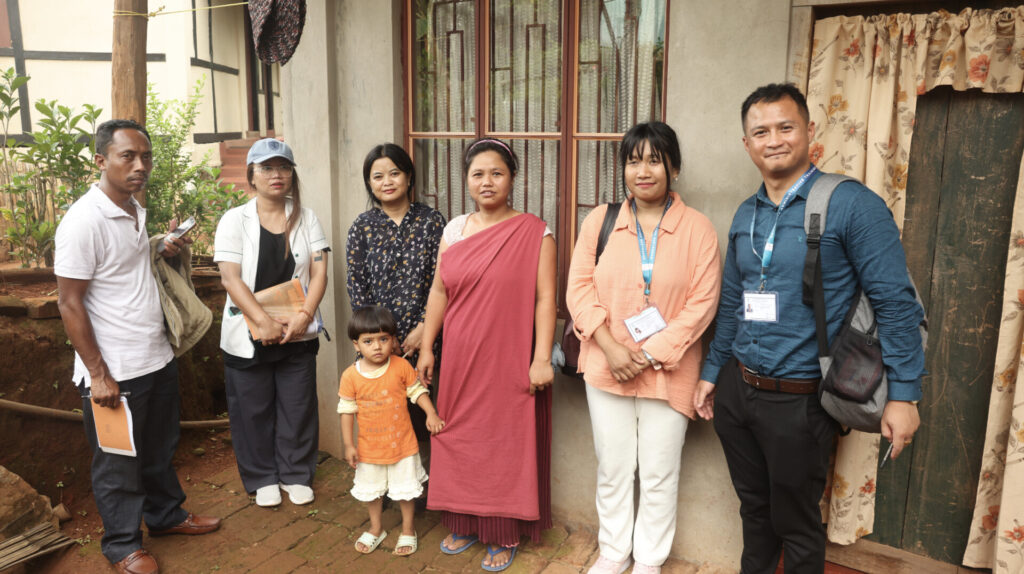Also on 23rd May 2025, another HDLP group journeyed to Umsning’s Kynjoin Umran village, a community grappling with its own set of challenges despite being part of Mawthadraishan Block:
- Low Aadhar Enrollment & Identity Barriers: Less than 40% of households possessed any form of Aadhaar documentation. Without it, children could not be registered for mid-day meals, pregnant women were ineligible for nutritional schemes, and families couldn’t claim cash transfers. HDLP teams immediately set up a mobile Aadhar camp, ensuring that local officials collected fingerprints and photographs on the spot.
- Teenage Pregnancies & High-Risk Mothers: Statistics from the local Anganwadi showed that two out of every ten pregnancies in the last year were classified as high-risk. Six pregnancies in ten years within a single family, accompanied by two child deaths, underscored the absence of proper birth-spacing counselling. HDLP facilitators provided birth spacing counselling, explained the importance of institutional delivery, and initiated discussions to establish a new Anganwadi Centre to reduce travel time for expectant mothers.
- Severely Underweight & Stunted Children: One under-five child measured significantly below both height and weight percentiles, reflecting severe malnutrition. Acute water scarcity forced families to rely on a distant pond for daily needs. As an immediate response, nutritionists on the HDLP team conducted nutritional counselling, recommending locally available, micronutrient-rich foods, and urged caregivers to attend ICDS regularly.
- No Vocational Exposure for Youth: Despite possessing agricultural or artisan potential, local teenagers lacked any vocational training. The HDLP group presented the M-POWER scheme’s vocational modules (tailoring, apiculture, basic IT) and collected names of ten interested participants to kickstart the first batch of skill-building workshops.
- School Dropouts & Educational Gaps: Dropout rates soared past 30% in upper primary grades. Lack of motivation, combined with the necessity to help with household chores and water collection, prevented many students from completing elementary education. HDLP facilitators proposed forming a Village Education Committee with dedicated school counsellors to re-enroll these children and track their attendance.

On-the-Spot Actions:
- Aadhaar Literacy Drives: A small “Aadhaar Awareness Corner” was set up in the village square, where volunteers explained enrolment steps, helped families gather necessary documents, and tracked progress for follow-up.
- Nutrition & Water Solutions: Through coordination with local NGOs, plans 321`azx were drawn to install a rainwater harvesting system under MGNREGA funding. Local carpenters volunteered to build storage units once materials arrived.
- High-Risk Pregnancy Monitoring: A dedicated roster was created for local health workers to visit high-risk mothers at transit homes, ensuring that at least three visits happen before delivery.
- Formation of SHGs & Youth Clubs: Eight women agreed to join a nascent SHG focused on micro-savings and maternal health, while five adolescents signed up for a preliminary youth leadership workshop aimed at vocational mapping.
By evening, Kynjoin Umran had secured 12 new Aadhar registrations, a proposal for a second Anganwadi Centre was formally put forward to district authorities, and a list of 15 children (both boys and girls) was set to return to class under a revived school enrolment drives. Through these practical, data-anchored efforts, Umsning’s residents began seeing that government schemes—when explained and facilitated—could become genuine catalysts for change.